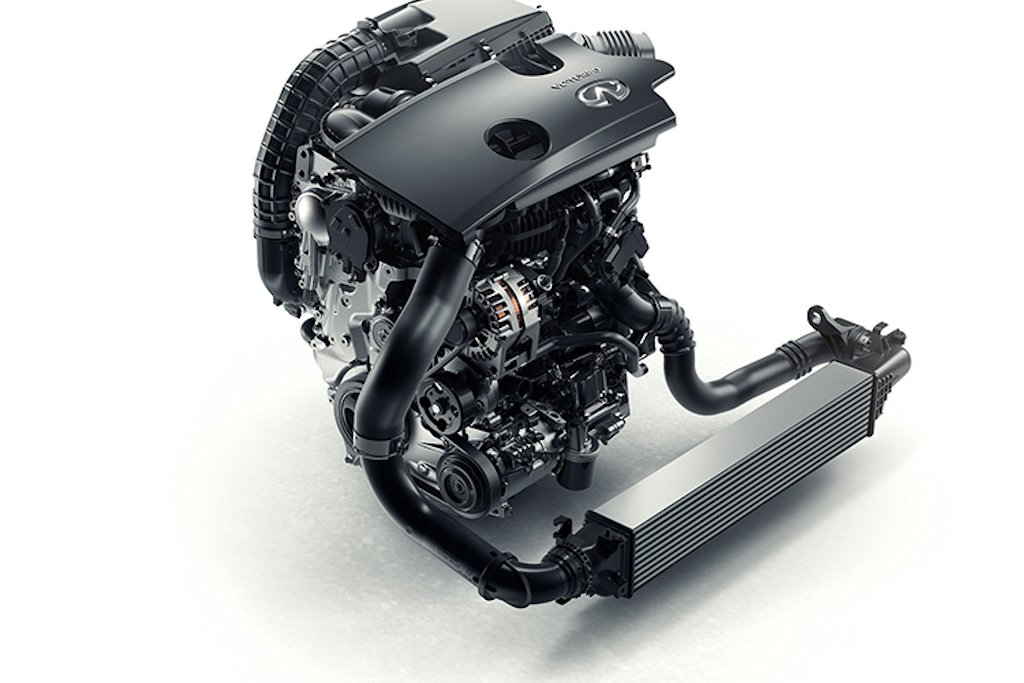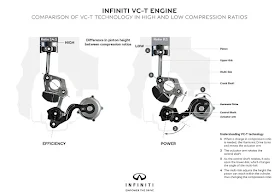Auto NewsAugust 16, 2016
Variable Compression is Nissan's Answer to Mazda's Skyactiv
You’re looking at Nissan’s answer to Mazda’s Skyactiv Technology: VC-T. It doesn’t have the same ring to it as Mazda’s high-compression gasoline motor, but it comes packing some serious technology in the form of variable compression. It’s one of the most advanced internal compression engines ever created and could spell the end of diesels.
Developed for more than 20 years, Nissan’s new four-cylinder VC-T engine represents a major breakthrough in powertrain technology. Branded under Nissan’s luxury marque, Infiniti, this engine delivers both high performance and high efficiency at the same time.
The VC-T engine is no longer limited by a fixed compression ratio. The ingenuity of the system lies in its ability to seamlessly raise or lower the high of the piston’s reach. Instead of having the pistons connect to the crankshaft, this engine has a pivot arm with a connection on each end. One end connects to the piston while the other connects to a second lower shaft which is controlled by an actuator arm. At any given time the engine's pistons move up and down according to the lobes on the crankshaft. But the actuator arm can change the angle of the pivot arm up and down.
As a result, the displacement of the engine changes and the compression ratio can vary anywhere between 8:1 (perfect for turbocharged applications) and 14:1 (for high efficiency). The sophisticated engine control logic automatically applies the optimum ratio, depending on what the driving situation demands. Apart from the variable compression ratio, the VC-T engine features a cylinder head with an integrated exhaust manifold, electronic wastegate control for the turbo, and a variable displacement oil pump. The engine also uses both port and direct injection as well.
According to Nissan, this unique engine enables this 2.0-liter turbocharged unit to churn out power and torque figures comparable to that of the company’s 3.5-liter VQ V6 engine with up to 27 percent better fuel economy. In fact, engineers have stated that it matches a similarly sized turbo diesel in terms of torque and is actually cheaper to produce.
For now, Nissan has confirmed that the VC-T engine will be exclusive to the Infiniti QX50 crossover which launches in 2017 (in North America at least), but given its transverse layout, it could very well fit in a wide variety of applications for both the Nissan and Infiniti brands.





Now Nissan needs to update and improve their boring cars' exterior and interior
ReplyDeleteMaybe we should have something like in the us you can have your oil changed outside without voiding your warranty. Just serviced my wife's suv and it costs almost 10k for the 10k pms
ReplyDeleteWhat brand is ur SUV?
DeleteMy wife's sta fe is an awesome car but amazing din maintenance sa casa
DeleteIf it's cheaper to produce why plan to limit it to Infinti?
ReplyDeleteNissan should seize the moment and use this engine across all models much like what Mazda did to its skyactive technology. Nissan is always late. Slow to introduce new models and upgrades. And is doing it again with this. It's a corporate culture. "Always slow" must be its motto.
Makes me shudder when I think about Mitsu's future
DeleteTo the manager of this website, I like your previous webpage design than the new one.
ReplyDeleteYou'll get used to it LOL. We're still implementing changes. The navigation is more or less the same though. It's more of a color scheme change.
ReplyDeleteblack background is better, but that's only me.
ReplyDelete